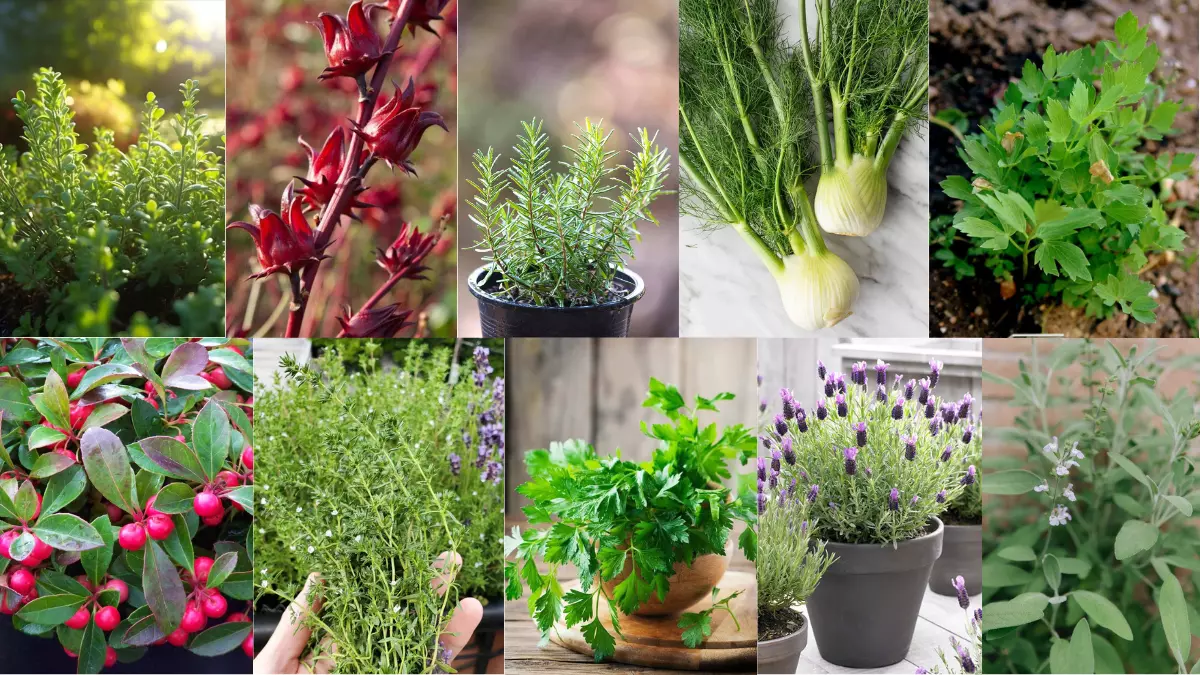Starting a Winter Herbs Garden is essentially about growing these special plants that taste good and have a nice smell, even when it’s cold. Whether you’re new to gardening or have a bit of experience, this guide is here to help you in making a garden full of lovely herbs. It’s an easy way to sprinkle some excitement into your winter days.
What is Hardy Herbs for Winter Herbs Garden
Winter-hardy herbs are types of herbs that can withstand lower temperatures and continue to grow during the winter months. Some common examples of winter-hardy herbs include rosemary, thyme, sage, chives, and parsley. These herbs can survive in colder climates and can be harvested throughout the winter, providing fresh flavor to winter dishes. These herbs can be planted in the fall to offer new flavors throughout winter.
Planning Your Winter Herbs Garden
Planning your Winter Herbs Garden is an exciting step towards creating a cozy space filled with fresh and flavorful herbs. Here’s a simple guide on how to plan your winter herb garden and some good herb garden plans suitable for winter:
Understand Your Space:
When planning your winter herb garden, it is important to understand your space and the climate in which you live. You will need to know what kind of herbs can survive in the cold temperatures of winter, as well as proper soil conditions and drainage.
- Check the soil’s condition and ensure it’s suitable for growing herbs.
- If the soil is unsuitable, you can add organic matter to improve it.
- Mix the soil thoroughly and make sure it’s moist but not soggy.
- Test the pH levels of the soil and water it if it is too acidic. pH levels are important because many living organisms have adapted to function best in a specific range of pH levels.
- Add compost and fertilizer if needed.
Sunlight Matters:
Most herbs need at least 6 hours of sunlight per day to grow. If you live in a cold climate, consider investing in a grow light to supplement your plants’ needs.
Hardiness Zones:
Always check the hardiness zone before planting any herbs in winter herbs garden. Some herbs can withstand cold temperatures, while others cannot. Herbs need good drainage and sunlight to thrive. They should also be fertilized regularly to promote growth. Regular pruning should be done to maintain the shape of the plants.
Herbs that need cooler temperatures should be planted in the fall, while herbs that need warmer temperatures should be planted in the spring. Herbs can also be grown in containers and moved indoors during the colder months.
Group Similar Herbs:
Grouping the plants makes it easier to maintain and care for your garden.
Plants that share the same water needs can be grouped together, making it easier to provide them with the necessary water.
Grouping can also help with pollination, as cross-pollination between plants in the same group is more likely to occur.
Pots or Ground?
Decide if you want to plant your herbs in pots or directly in the ground. Planting them directly in the ground allows for better root growth and more stability. If space is an issue, pots are the better option. Additionally, pots are easier to keep free of weeds and pests.
Some good herbs for winter herbs garden include thyme, lavender, rosemary, oregano, sage, and chives. Planning for adequate drainage and protection from excessive cold and wind is also important.
Kinds of Herbs by How They Grow
Each type of herb has different uses and benefits. Perennials are often used in cooking due to their long-lasting flavor. Biennials are often used in traditional medicine due to their healing properties. Annuals are best used for medicinal purposes and for flavoring food.
(Perennial) Herbs That Come Back Every Year
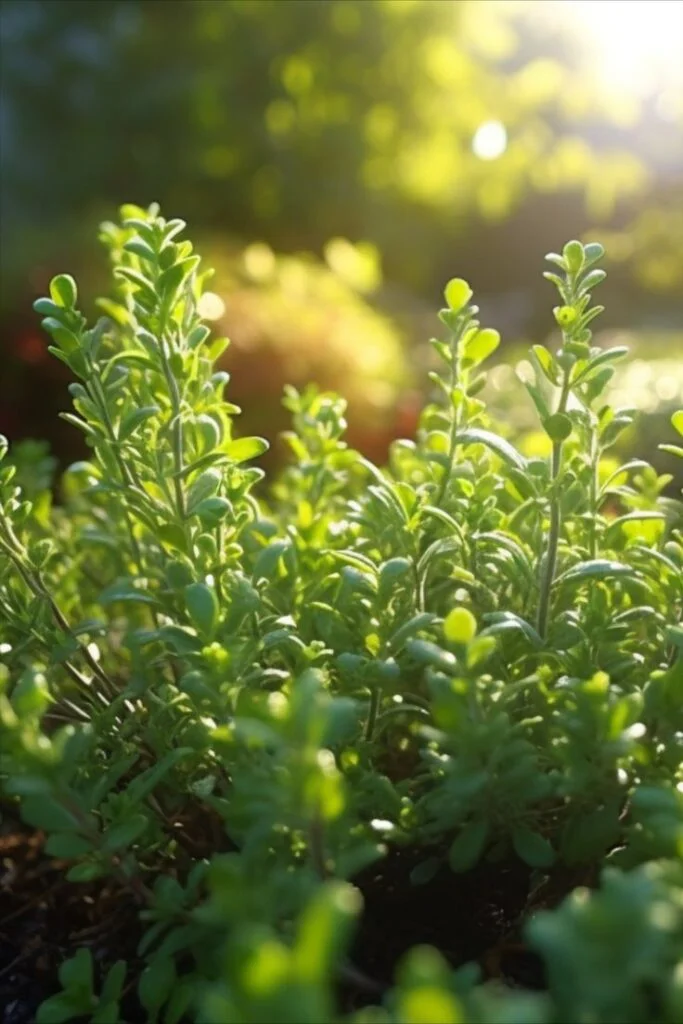
Thyme (zones 5 to 9):
Thyme is a perennial herb that is native to Mediterranean regions.
- Thyme likes full sun and well-drained soil.
- Water it regularly and fertilize it once a month.
- Snip off any dead leaves to keep the plant healthy.
- It can also be used in herbal teas, aromatic soaps, lotions, and medicinal remedies. It’s commonly used in cooking.
- Thyme is also a great choice for containers, as it tolerates dry conditions.
- It can also be used to repel pests such as mosquitoes.
- It can be used in aromatherapy to reduce stress and improve sleep.
Chives (zones 3 to 10):
Chives are a versatile herb that can be used in a variety of dishes.
- Chives (Allium schoenoprasum) is an herbaceous perennial plant in the Amaryllidaceae family.
- It is native to Europe, Asia, and North America. It is a hardy perennial plant that can grow up to 20 inches tall.
- It produces small onion-like bulbs and edible purple-pink flowers.
- Chives have a mild onion-like flavor and are often used in salads, soups, and other dishes for added flavor.
They can be grown from seed or from small divisions of the root. They are also resistant to pests and diseases.
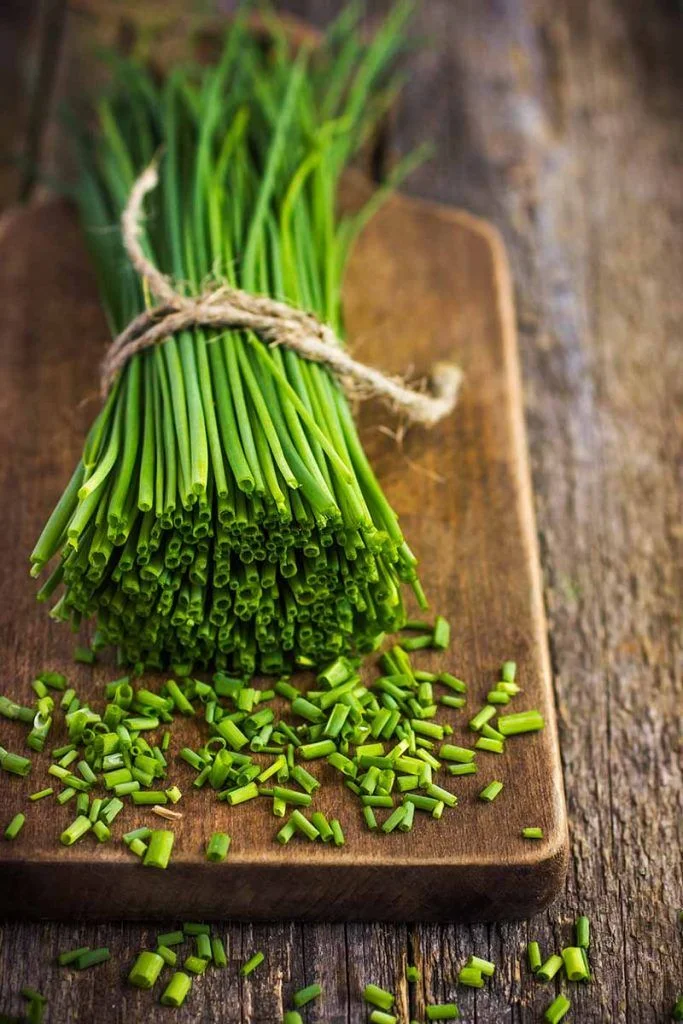
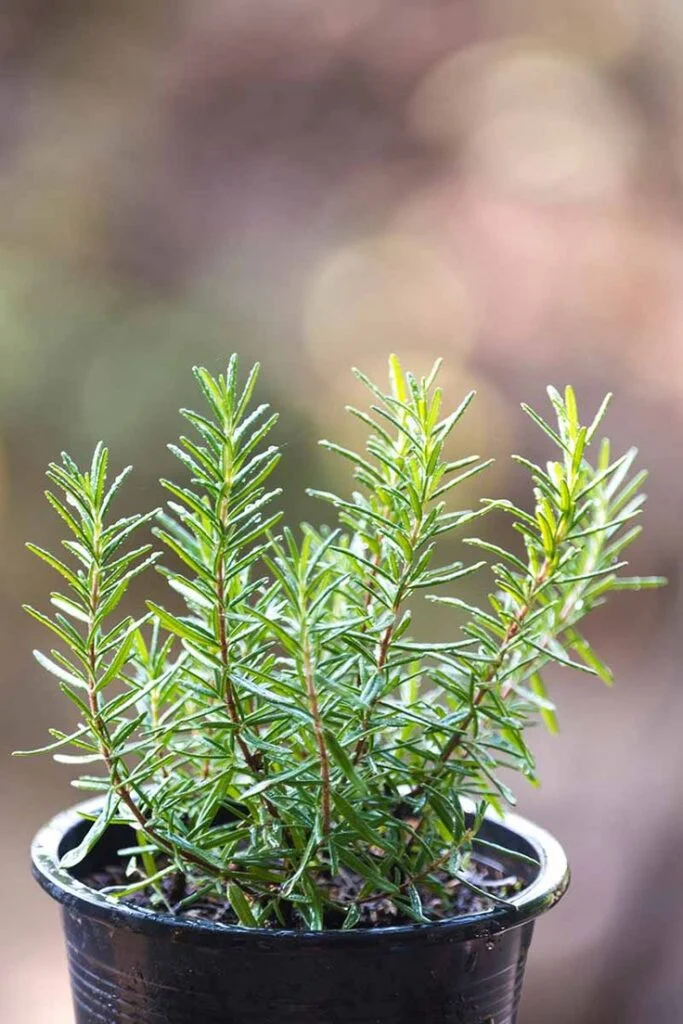
Rosemary (zones 6/7 to 10):
Rosemary is native to the Mediterranean region and grows best in warm, sunny climates. Also:-
- It has needle-like leaves and is known for its strong, earthy flavor and aroma.
- Rosemary also has many medicinal uses, including being used as an antioxidant, anti-inflammatory, and antiviral.
- Rosemary has a wide range of medicinal uses, including natural remedies for headaches, colds, and indigestion.
- In a sunny spot, it can be grown indoors or outdoors.
- The herb has a strong flavor and can add depth to savory dishes.
Mint (zones 3 to 8):
Mint is a perennial herb that is easy to grow and is commonly used in cooking. It is also known for its medicinal properties and is a popular ingredient in herbal remedies.
- Mint is a popular perennial herb that can be grown in a variety of climates.
- It is an attractive plant with fragrant leaves and flowers, and it can grow up to 3 feet tall.
- Mint is a fast-growing plant and can spread quickly, so it is important to contain it in pots or beds.
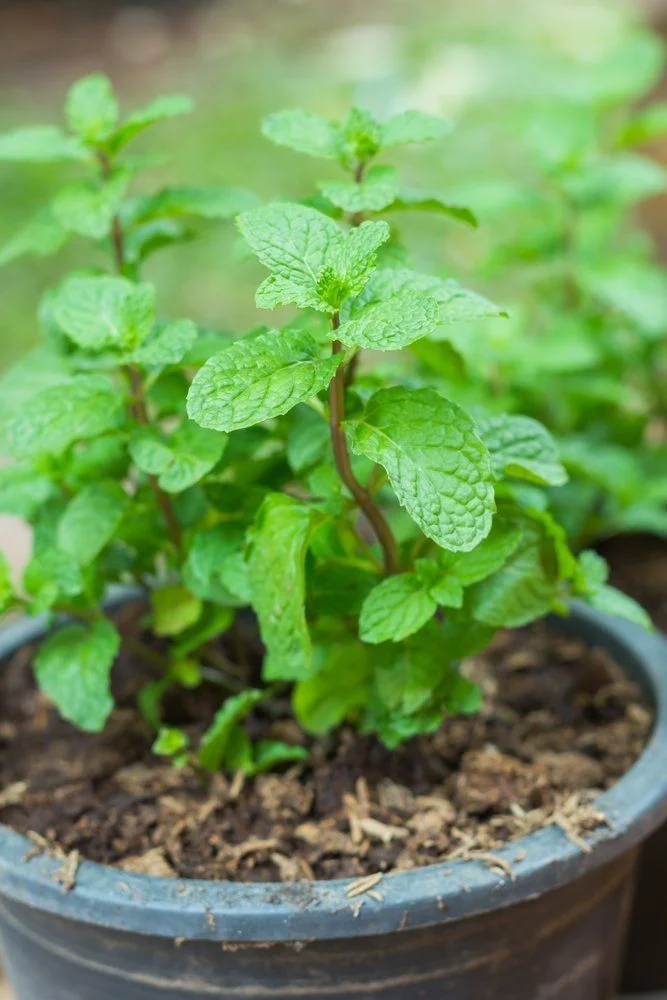
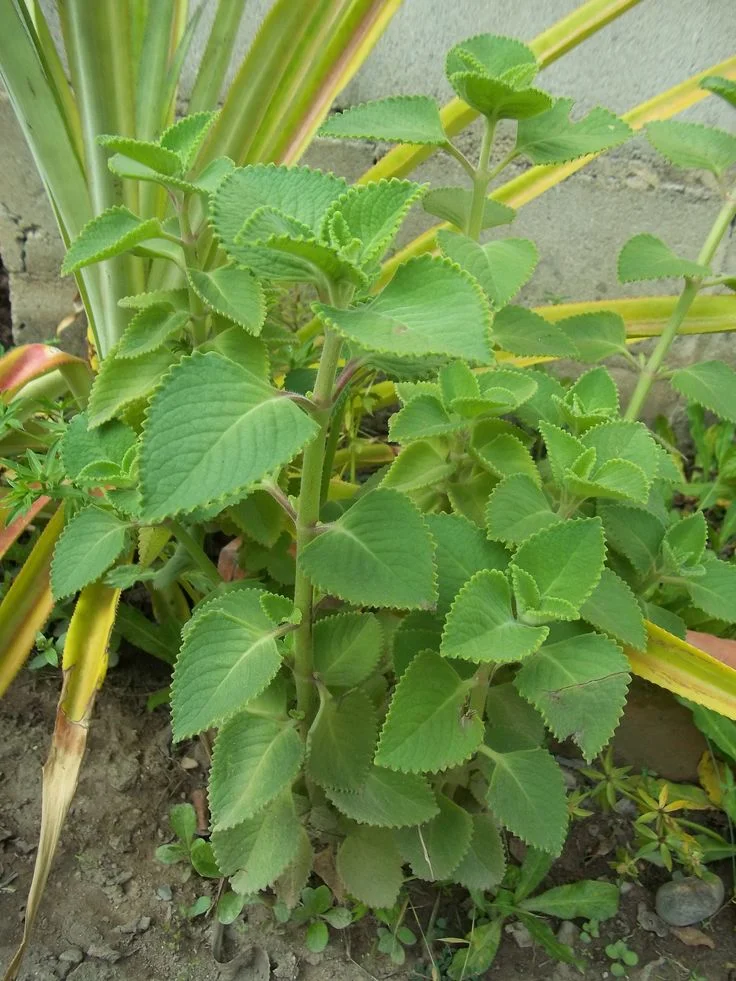
Greek Oregano (zones 5 to 9):
Greek Oregano is one of the winter herbs gardens. Such as:-
- Oregano (Origanum vulgare) is a perennial herb with fragrant leaves and pink-purple flowers.
- It is widely used in Italian and Greek cooking.
- Greek Oregano prefers full sun and well-drained soil, which is drought tolerant.
- Growing up to 1-2 feet tall and 3-5 inches wide, it can reach up to 1 foot in height.
- It has a strong, pungent flavor and is commonly used as a seasoning for salads, meats, and vegetables.
Lemon balm (zones 4 to 9):
Lemon balm is a member of the mint family and is often used in herbal teas. Besides:-
- Lemon balm (Melissa officinalis) is an aromatic perennial herb native to Europe.
- It is a member of the mint family and grows to a height of up to two feet.
- The leaves have a wonderful lemony aroma and flavor in teas, salads, and other culinary dishes.
- The leaves can be dried for use in potpourris and herbal sachets. It is a hardy plant that will come back every year.
- Lemon balm can be quickly grown from seed or cuttings and is tolerant of most soil types. Plants like this can also be grown in partial shade or full sun.
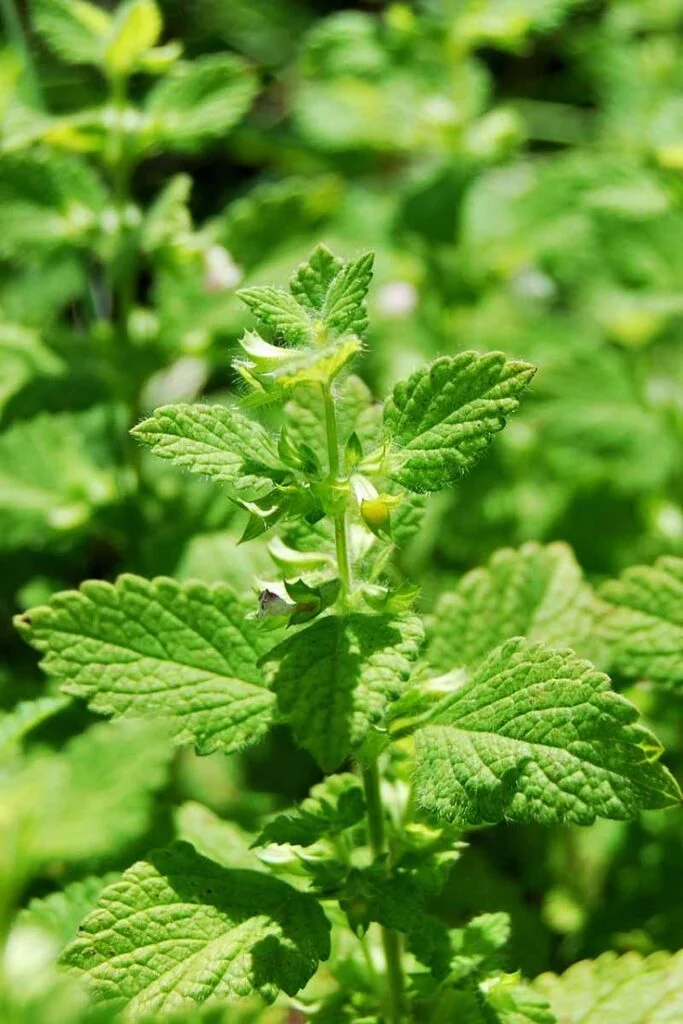
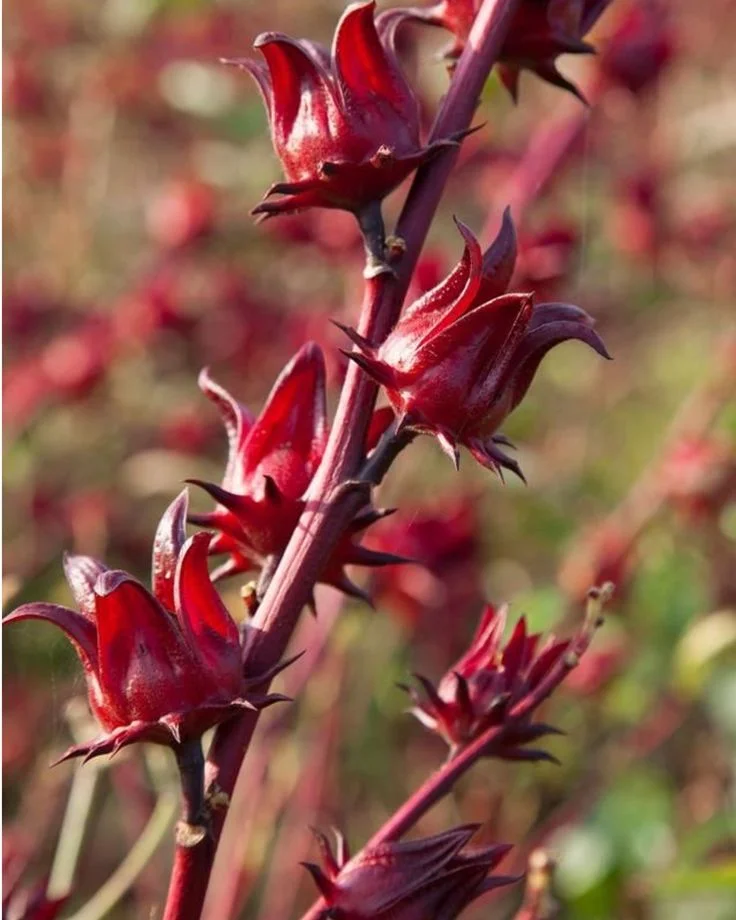
Sorrel (zones 5 to 9):
Sorrel is an attractive perennial herb (winter herbs garden) with a tangy flavor and is often used in soups and stews. Besides:-
- Sorrel prefers partial shade and moist soil.
- It needs regular watering and mulching. Harvest the leaves when they are young and tender.
- During the warm summer, sorrel produces edible flowers that add a unique flavor to salads and soups.
- Sorrel is a perennial and can be grown in containers.
Sage:
Sage is an herb known for its calming and healing properties. Also:-
- The perennial herb sage (Salvia officinalis) grows in USDA hardiness zones 5-9.
- It can be grown in full sun and partial shade, making it a low-maintenance herb.
- It is drought-tolerant and can withstand temperatures down to -20°F.
- When harvesting sage, it is best to pick individual leaves from the stems as needed.
It is also high in antioxidants and has many medicinal properties. In the winter herbs garden or containers, sage can be harvested multiple times throughout the year.
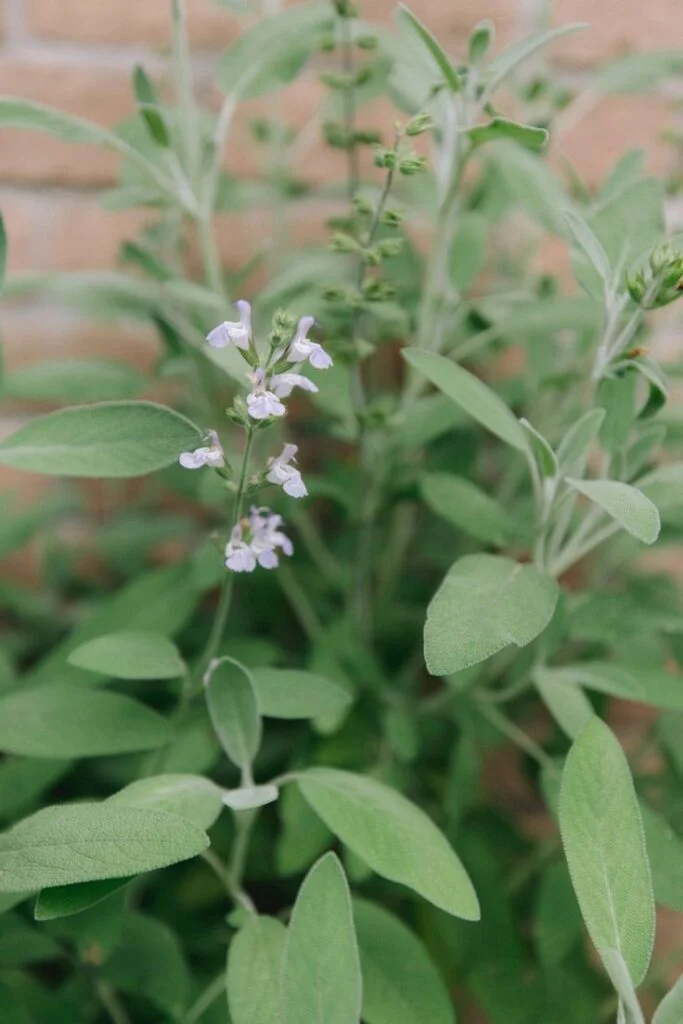
(Biennial) Herbs That Take Two Years to Grow
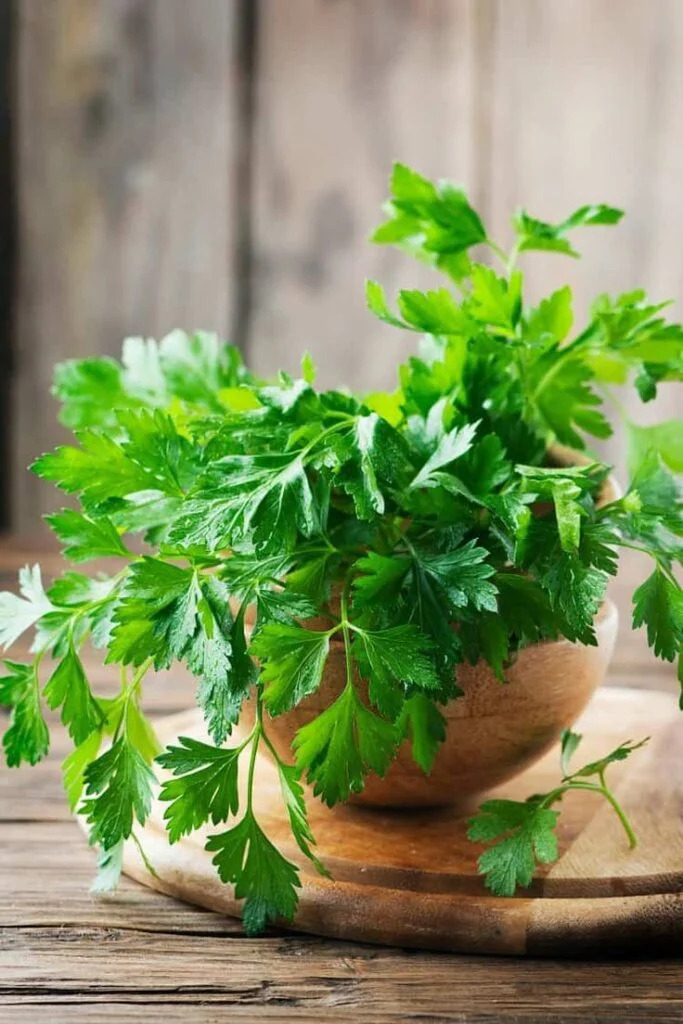
Parsley:
Parsley is a biennial herb that grows in temperate climates.
- It takes two years for parsley to complete its life cycle.
- It grows as a rosette of leaves in the first year, and then in the second year, it flowers and produces seeds.
- Parsley also has iron, calcium, magnesium, and vitamins A and C. It can also be used to make herbal teas and tinctures.
- It can be grown in either a garden or in a container
Chervil:
Chervil is one of the winter herbs gardens. Such as:-
- Chervil, or French parsley, is a biennial herb part of the carrot family.
- Chervil is a biennial herb that is native to Southern Europe and Asia.
- The plant has delicate leaves and grows to about 24 inches.
- In full sun, it prefers moist, well-drained soil.
- The leaves have a mild, anise-like flavor often used in salads and other dishes.
- It is also known for its medicinal properties, such as being used to reduce inflammation, improve digestion, and relieve stress.
- When harvesting, picking the leaves in the morning before the sun’s peak is best.
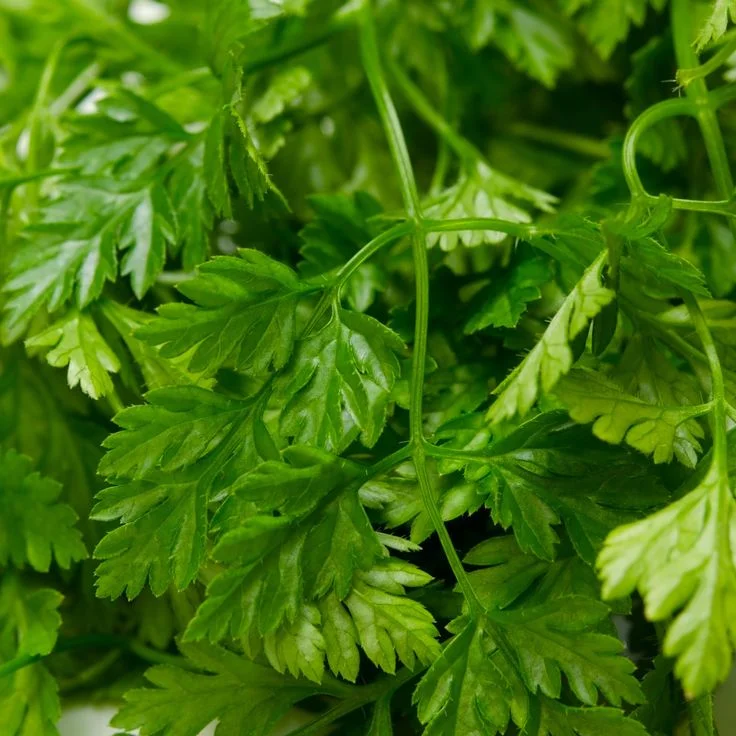
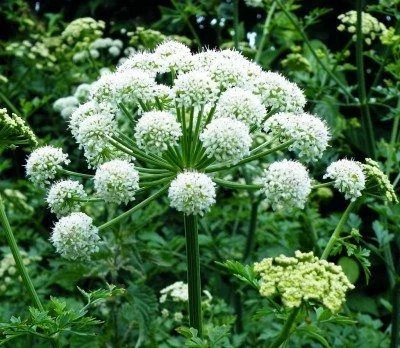
Angelica:
Angelica is a biennial herb for winter herbs gardens. Such as:-
- Angelica is a biennial herb that is primarily used for its medicinal properties.
- It is native to Europe and Asia and grows to a height of 2-4 feet.
- The stem is hollow and can be up to 1 inch thick.
- The leaves are divided into dark green segments with a jagged edge.
- The flowers are small and white with a yellow center.
- Angelica treats various health conditions, such as digestive issues, headaches, and skin ailments.
(Cold-ready Annual) Herbs That Can Handle the Cold for a Year
Cilantro:
Cilantro is a Cold-ready Annual. It is part of the winter herbs garden.
- Cilantro is a hardy annual herb in USDA plant hardiness zones 9 and higher.
- This cold-hardy herb can tolerate temperatures as low as 10°F (-12°C).
- It prefers soil that is rich and well-drained, as well as full sun.
- Cilantro should be planted in the spring after the last frost and will produce leaves throughout the summer.
- It should be harvested before flowering to maintain a continuous supply of leaves.
In addition to being an annual herb, cilantro, also called coriander, can withstand cold temperatures. It is an essential ingredient in many Asian and Mexican dishes. It is easy to grow and a great source of antioxidants, vitamins, and minerals.
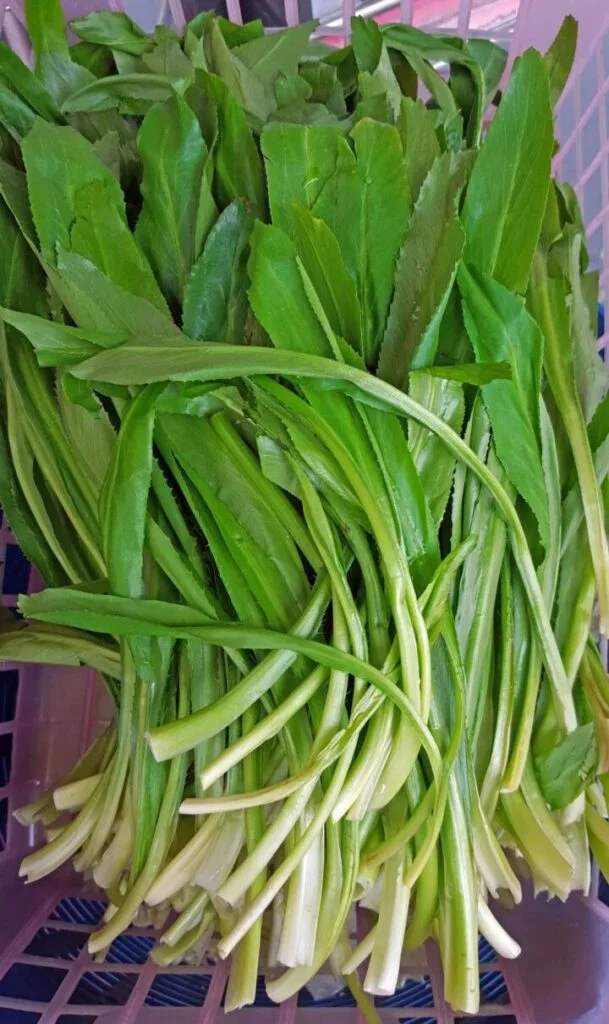
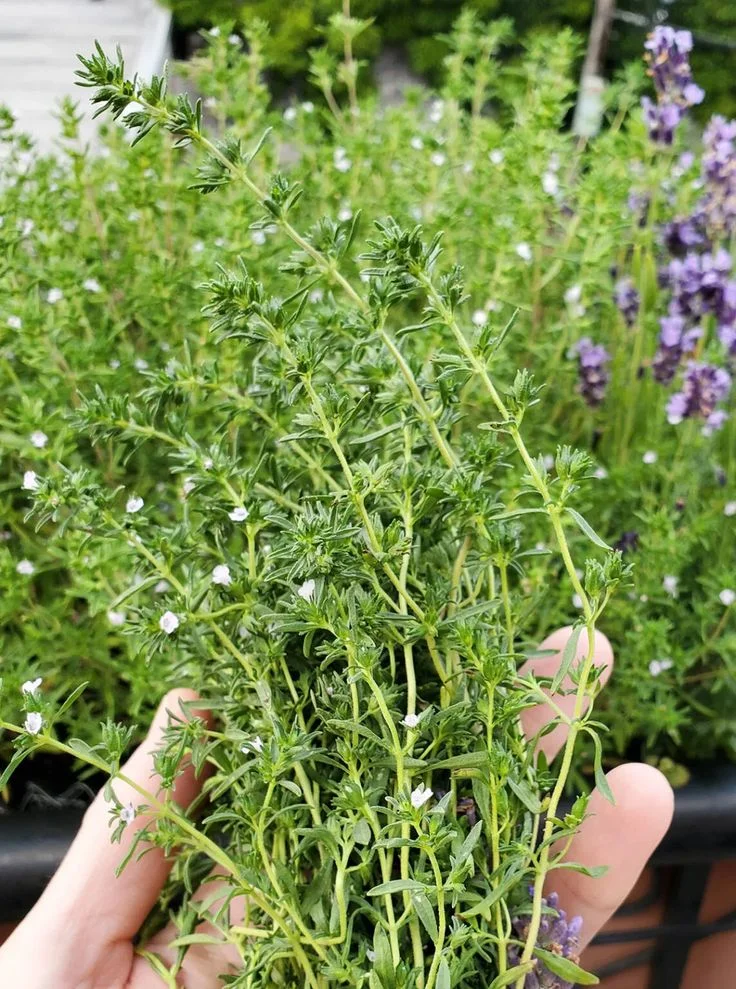
Winter Savory:
Winter Savory is one of the perennial herbs for winter herbs garden.
- It is a perennial herb that is hardy in USDA zones 4 to 9.
- It is an easy-to-hardy perennial with herbivorous leaves and white flowers.
- A peppery flavour adds an interesting twist to soups, stews, and sauces.
- It can either be used fresh or dried. You can also use the leaves as a garnish and in salads.
- It is a tough herb and can survive temperatures as low as -30°F.
- It has a pungent flavour that is similar to oregano and thyme.
- Winter Savory can also be used to make tea and as a medicinal herb for treating respiratory problems.
Dill:
- It can withstand temperatures as low as 15 degrees Fahrenheit, which makes it very cold-hardy.
- It grows up to three feet tall and has feathery leaves and yellow flowers.
- Dill is often used in pickling and can be used to season soups, salads, and vegetables.

Medicinal Herbs for Winter Herbs Garden
Medicinal winter herbs are plants that can be used to treat a variety of ailments due to their anti-inflammatory, antiseptic, and antioxidant properties. Some of the most popular medicinal winter herbs include elderberry, rosemary, thyme, oregano, sage, and mint. These herbs can be consumed in teas and tinctures or applied topically in salves and creams
Extra Herbs to Grow in Winter
Think about adding these herbs to make your winter herbs garden more interesting:
- Lavender: Plant it in soil that drains well and where it gets sunlight. Water it regularly and make sure not to let it dry out. Prune it regularly to keep it in shape. Use it for cooking and for aromatherapy.
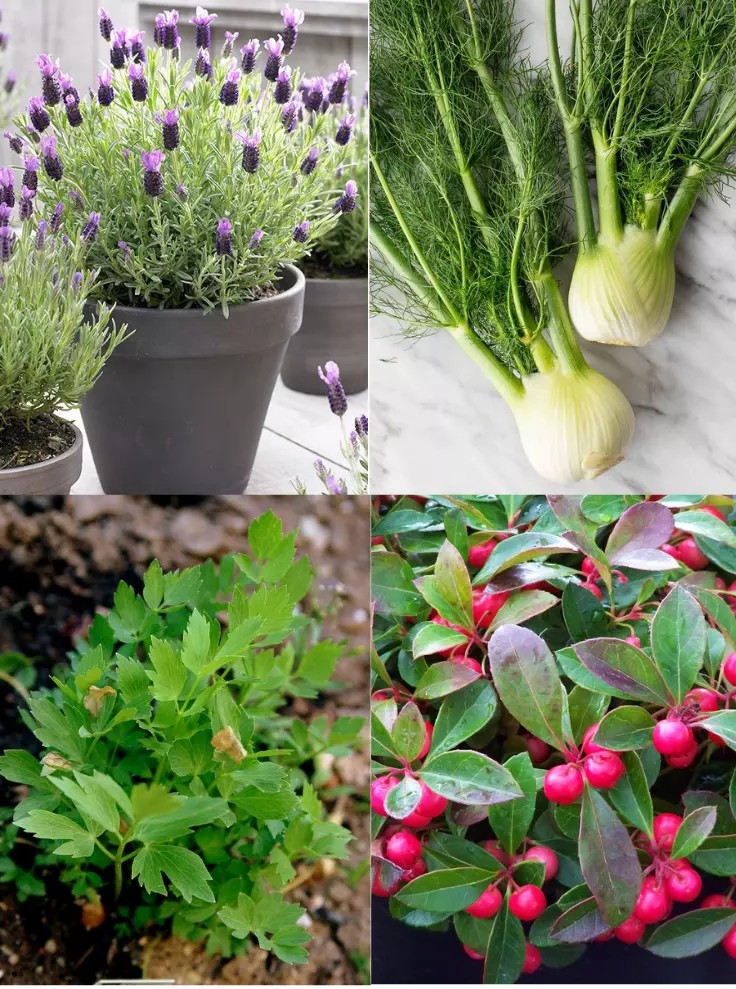
- Fennel: Has a sweet, licorice-like taste and adds a special touch to winter salads. Fennel is also a good fiber, potassium, and vitamin C source. It can be roasted or sautéed and added to soups and stews.
- Lovage: Tastes like celery and grows well in moist soil. Lovage is an attractive and aromatic herb that is easy to grow. It can be used as a flavoring in soups, stews, and salads. It can also be used in herbal teas.
- Wintergreen: Wintergreen oil is also used in perfumes and soaps. It is also used in candies and chewing gums and is a popular ingredient in skin care products. Wintergreen oil is rich in antioxidants and is often used in aromatherapy.
Simple Tips for Taking Care of Your Winter Herbs Garden
Winter herb gardens need to be watered frequently and evenly, usually at least once a week or more, depending on the weather. The soil should be fertilized regularly with a balanced fertilizer to ensure healthy growth. Mulching is also important, as it helps keep the soil moist and warm and prevents weeds from taking over. It is important to monitor the temperature, as some herbs may not thrive in extreme temperatures. Finally, pruning is essential for maintaining a winter herbs garden, as it helps to keep the plants healthy and productive.
How to Protect Your Winter Herbs Garden in Winter
Winter Herbs Garden needs protection from the cold winter weather. The best way to do this is to cover them with a layer of mulch, such as straw, leaves, or bark. This will help keep the soil insulated and protect the roots from cold temperatures. For cold-sensitive herbs, you may need to bring them indoors or place them in a sheltered spot. Make sure your winter herbs garden they are still exposed to some sunlight and get adequate air circulation. Finally, water your herbs regularly in the winter to help keep them healthy.
How Much to Harvest in Winter Herbs Garden
When planning your winter herbs garden, think about how much space you have and how much you like to cook with herbs. It might be tempting to get a lot of different herbs, but it’s important not to crowd them too much. If herbs are too close together, they might not grow well because they’ll fight for sunlight and other necessary things.
Start with just a few kinds of herbs so you can learn how to take care of them. This way, you won’t have too much to handle. As you get more confident, you can try growing different herbs and make your winter herbs garden more interesting.
Conclusion
You can have a successful winter herbs garden by understanding the different types of herbs that can handle the cold, planning your garden, and picking the right herbs for where you live.
Remember that a well-kept winter herbs garden doesn’t just give you tasty herbs for cooking; it also makes your outdoor space look nice. With some care and attention, your winter herbs garden will make you happy all through the colder months. So, get ready to do some gardening, take on the winter challenge, and enjoy all the good things from your winter herbs garden.

